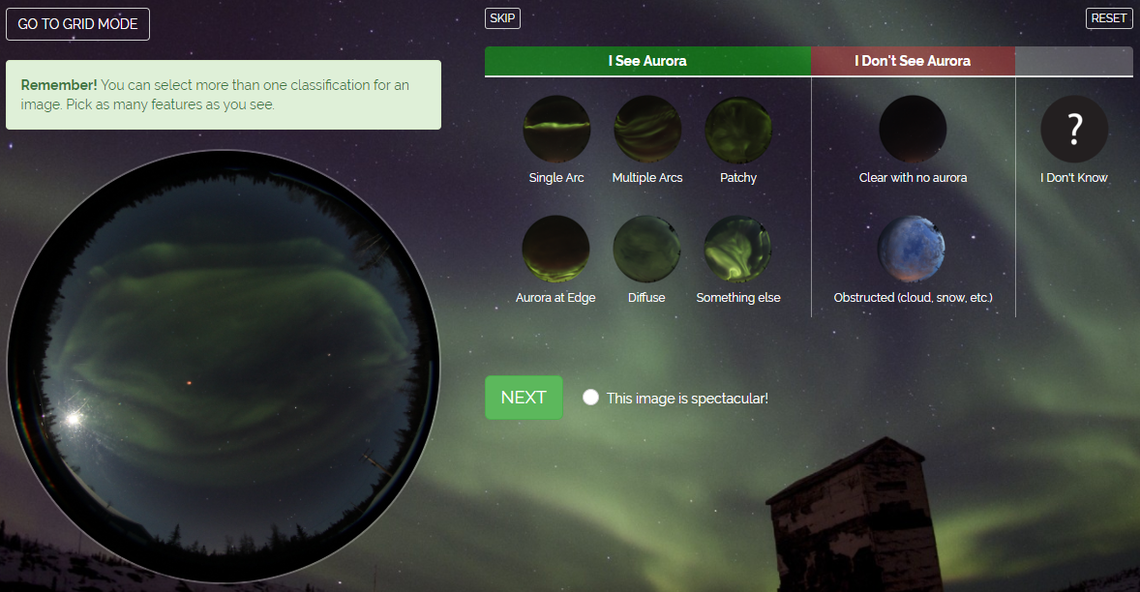Auroral Zone
Hundreds of millions of images have been captured by cameras in the Canadian North, with a large fraction by the University of Calgary’s Auroral Imaging Group. Analysis of these images is an essential step in the advancement of auroral physics, providing scientists with a window into the exciting physics of near-earth space. To be scientifically useful, we must classify these images into several different groups based on the type of aurora which is visible or not. Unfortunately, attempts at automated pattern recognition techniques have produced results which are not reliable enough for scientists to use. This results in a very labour-intensive process which humans have to carry out.
With the introduction of a new set of auroral imaging instruments part of the TREx (Transition Region Explorer) project, we will capture approximately 40 million images per year. In order to classify these massive amounts of images in a short period of time, we have designed a citizen science project to help aimed at engaging the general public in auroral science, called "The Auroral Zone" (http://auroralzone.org). This project facilitates a symbiotic relationship between the scientific community and the general public. Using the data from this website, a database of classified auroral images will be created and then used for future analysis by the scientific community.
In exchange, the general public are able to learn about the aurora and contribute to auroral physics in a tangible way. The ultimate aim of this project is to create an ever expanding database of all-sky images classified by arc type (i.e. single arc, diffuse aurora, multiple arc, etc.) and filtered for adverse viewing conditions (i.e. snow, rain, light pollution, etc).

